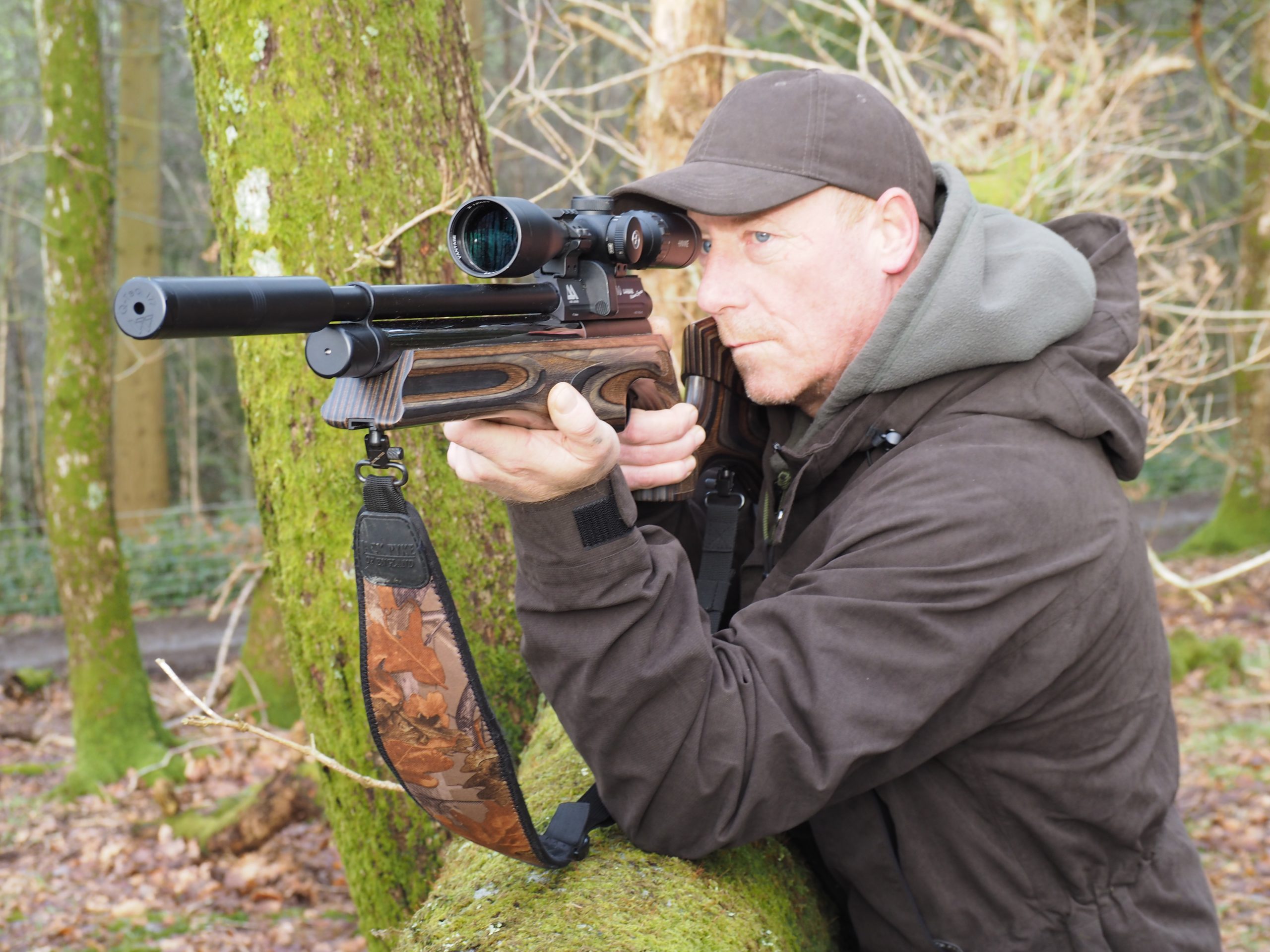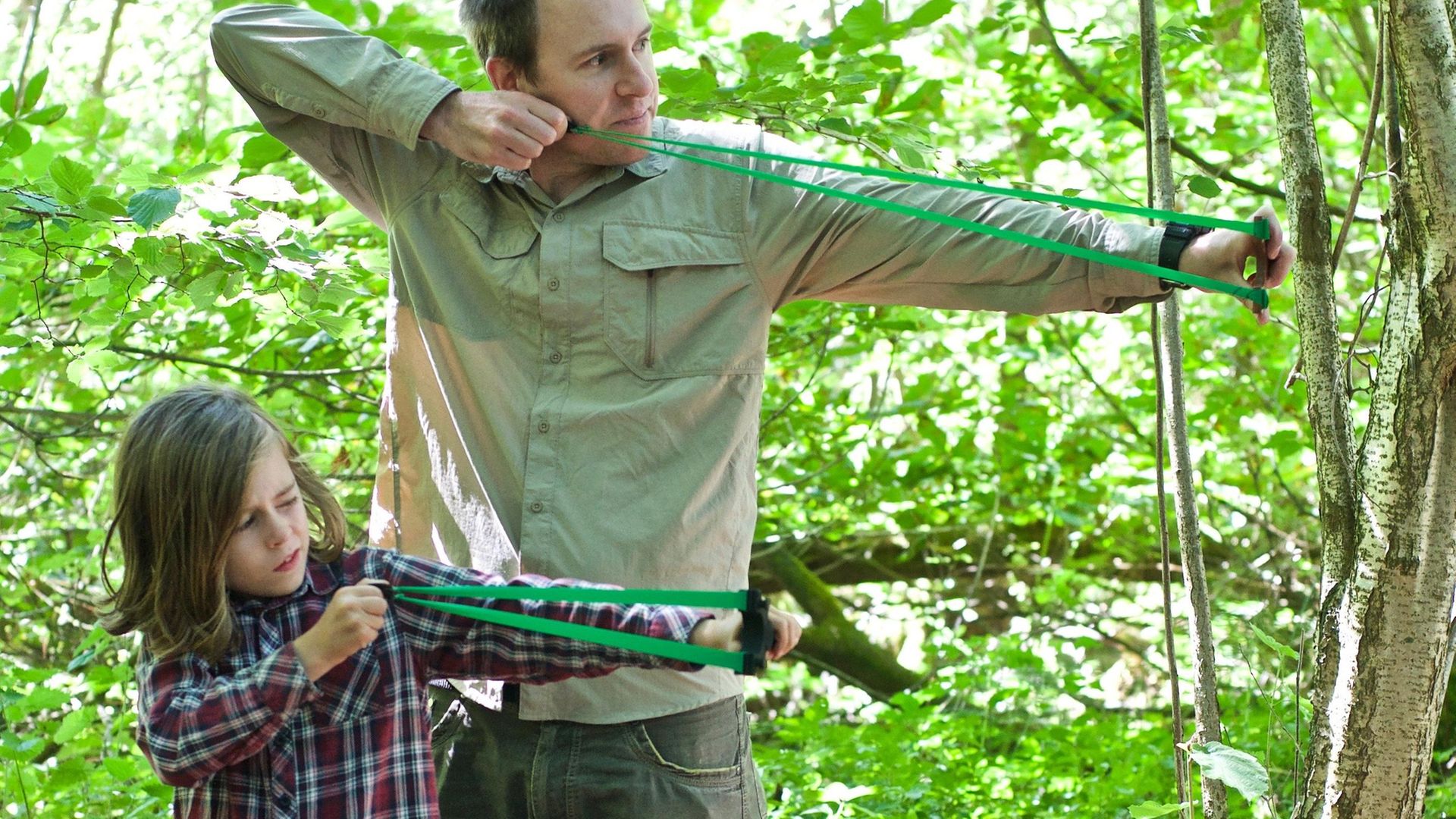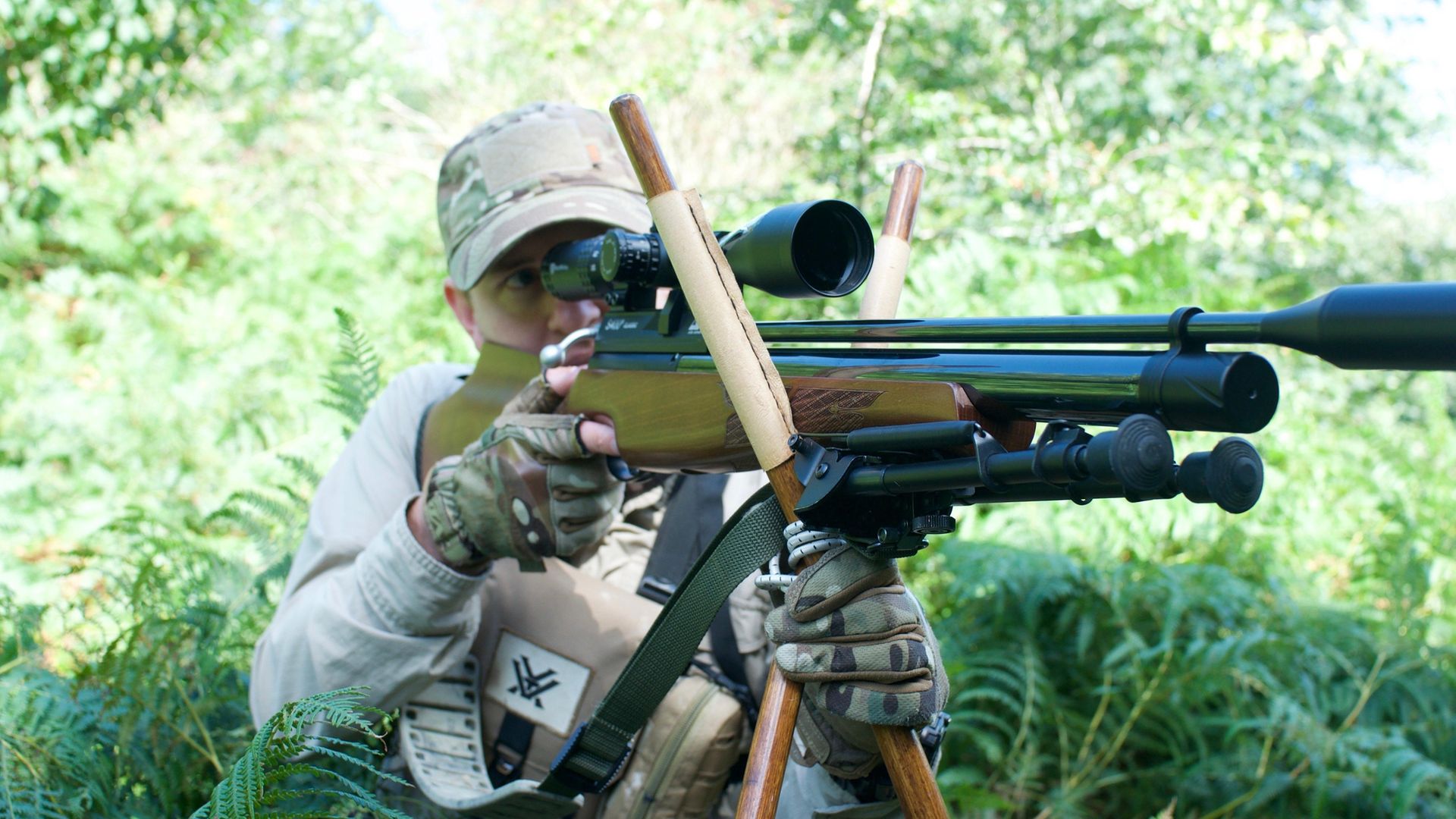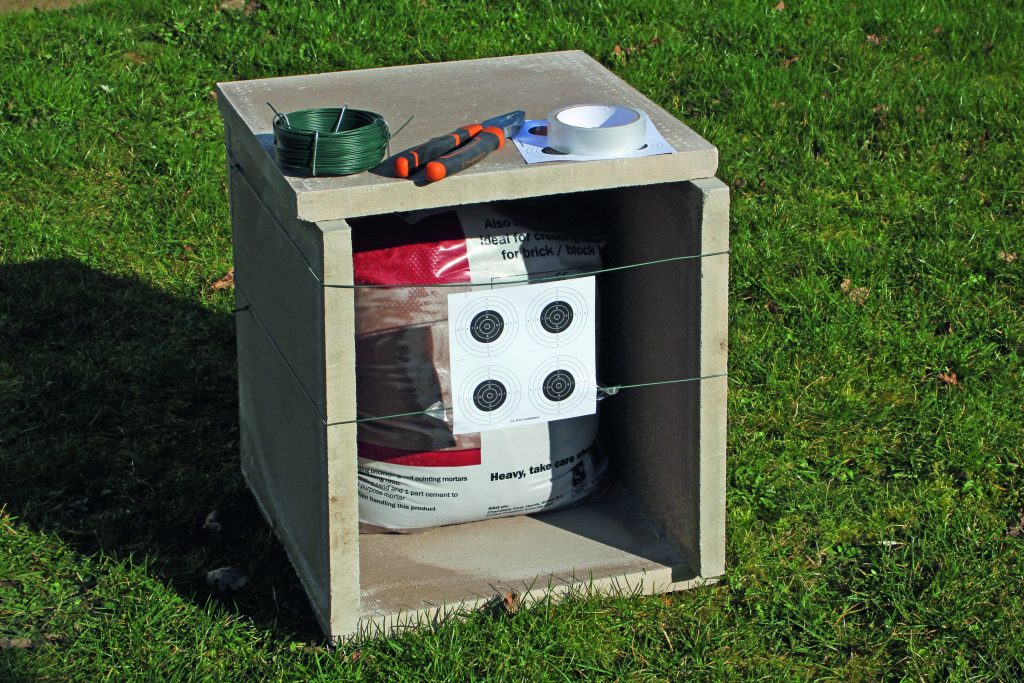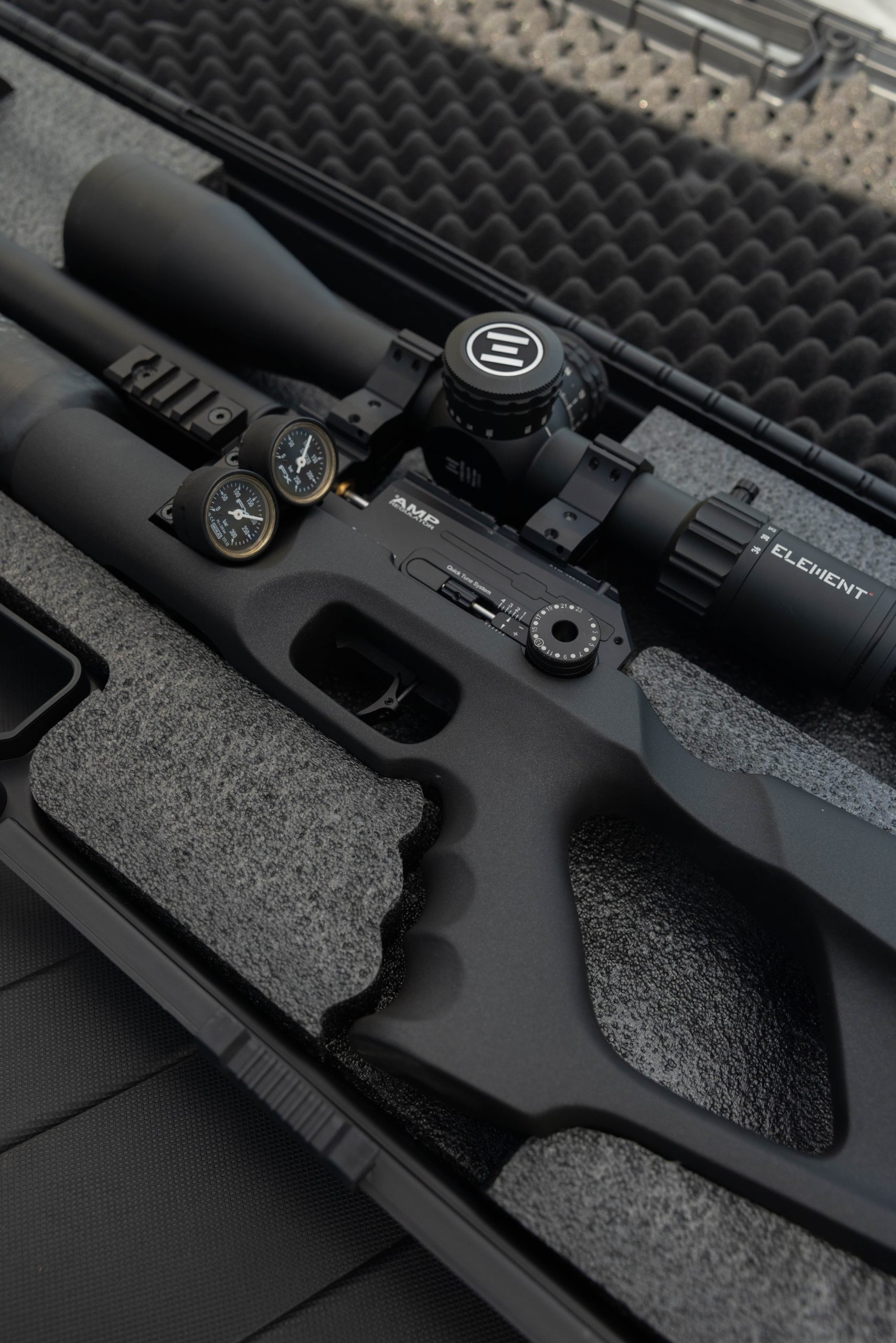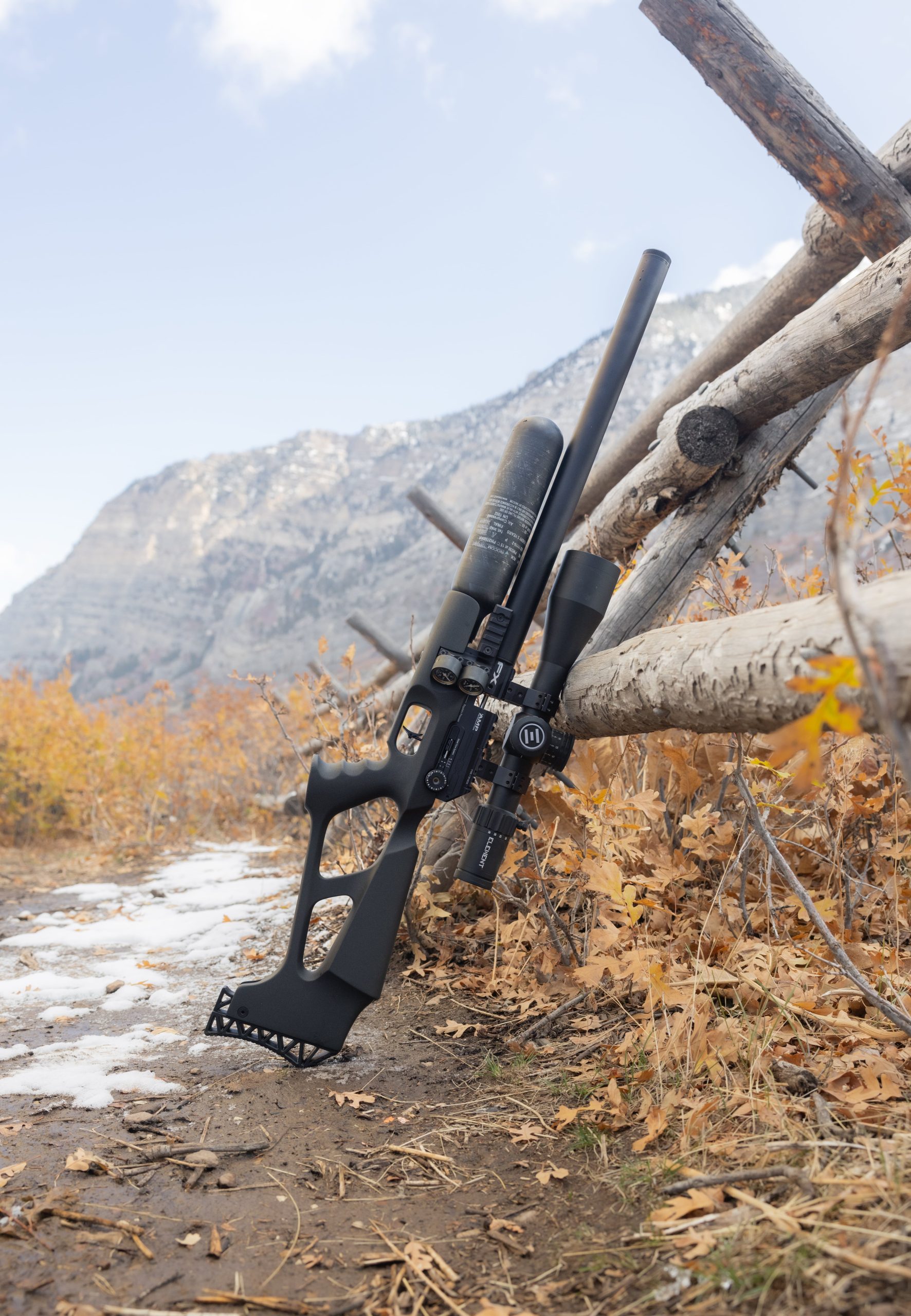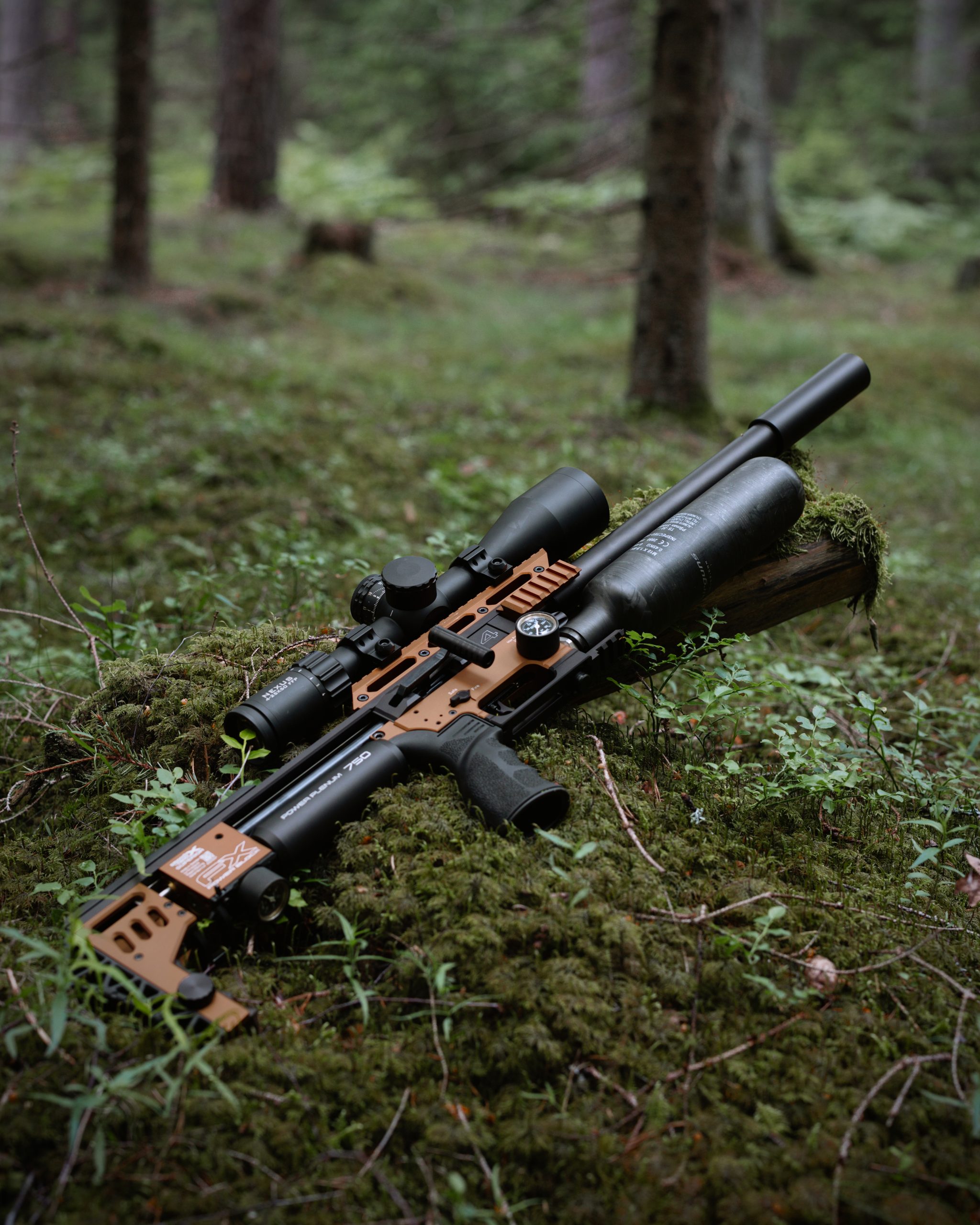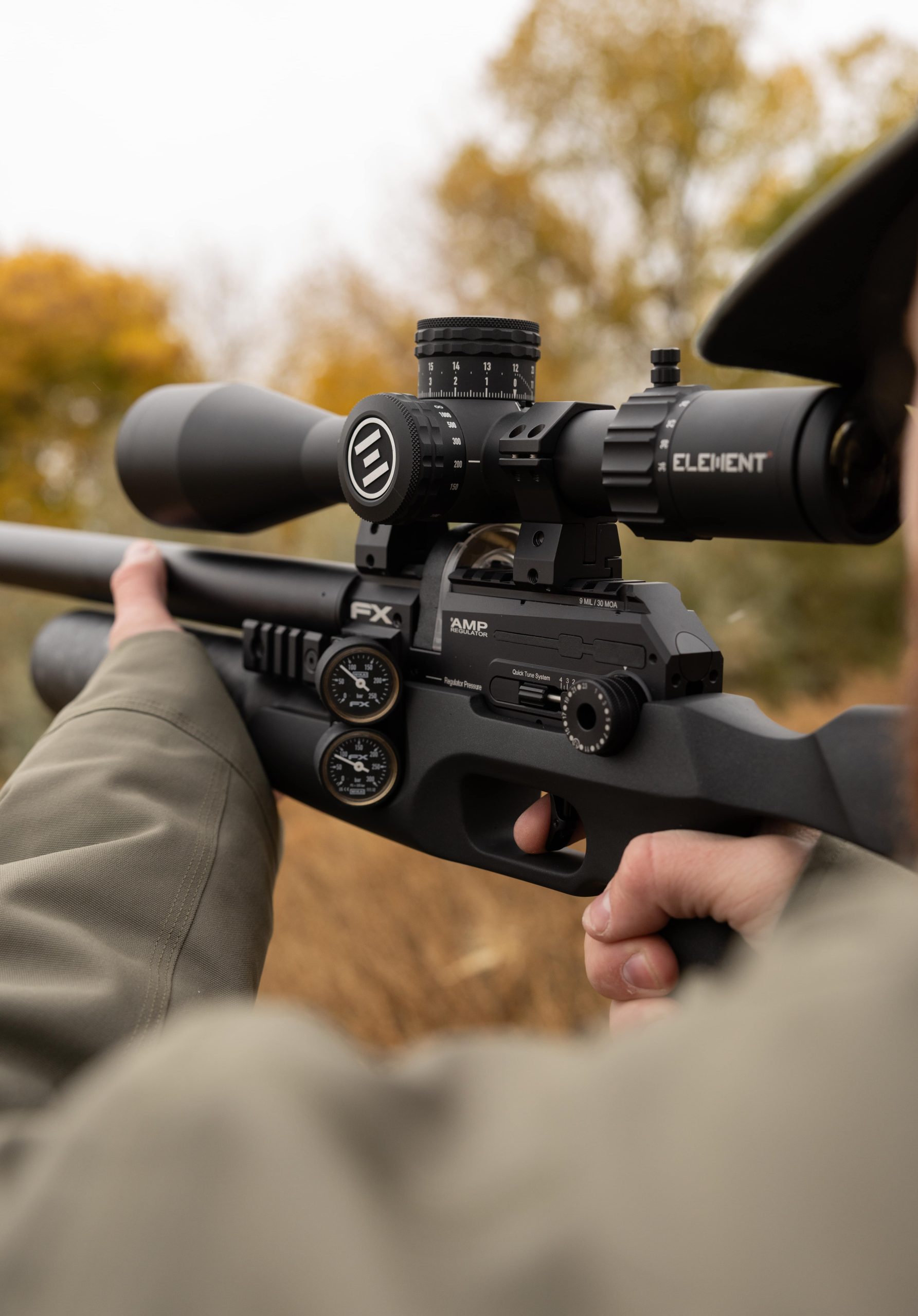Shooting
Improve your air rifle shooting with a catapult!
Would you like to appear on our site? We offer sponsored articles and advertising to put you in front of our readers. Find out more.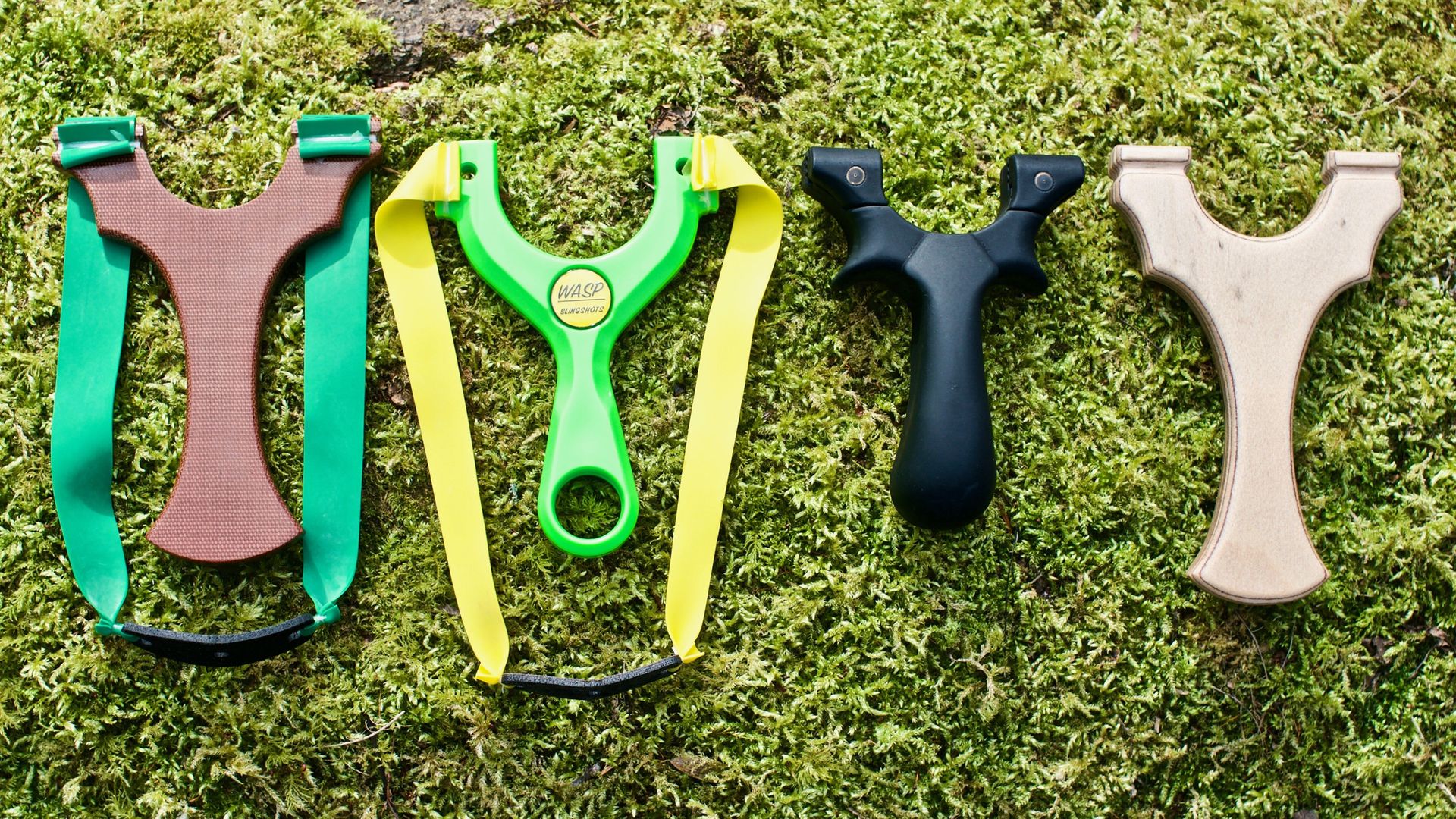
Phil Siddell discovers the joys and the benefits of shooting the humble catapult, and explains how it can be used to improve your air rifle shooting too.
At the beginning of the initial national lockdown, lockdown 1.0, which now seems little more than a distant memory, I found myself in a bit of a quandary over how to keep my shooting eye sharp. Despite my natural inclination to roam far and wide in the rural idyll, I live in a small semi-detached dwelling on a heavily tarmacked housing estate. Our back garden is diminutive and bordered by neighbours on three sides and is far from being ideal for use as a ‘tin-can alley’ range.
Legally speaking, there was nothing to stop me buying a CO2-powered pistol to shoot at home. However, I’ve owned a few in the past and aside from the audible pop-pop report and the annoying litter created by the gas bulbs, these pistols have never held my interest for very long. Obviously, others enjoy them immensely, and I can understand why, but they’re not for me. In addition, I had a Firearms Certificate application pending with my local police force at the time, and didn’t want a concerned Mrs Smith from next door calling the Old Bill because she’d seen me shooting a ‘handgun’ in the back yard.
SLINGSHOT PROWESS
Salvation came when I chanced upon a YouTube video showcasing the incredible slingshot prowess of a chap called Wayne Martin. Whilst I had been unable to hit a barn door with the Barnett Black Widow catapult I’d owned as a youngster, Mr Martin was downing squirrels at 30 or even 40 yards. I was sold; a ‘Y’-shaped stick and some rubber bands was the way forward for me! As luck would have it I was able to make a trade with Wayne through his online shop Cattyshack, sending him one of my custom knives in return for what turned out to be a positive treasure trove of catapult goodies.
One of the most delightful things about slingshots is their simplicity, and because they are so simple to manufacture, they are relatively inexpensive. In the world of slingshots, a little bit of money – or a valuable custom knife – goes a very long way. As I unpacked my parcel from Cattyshack, I could little have imagined the journey I was about to embark upon and just how much of a positive influence this bundle of frames, elastic bands and ball bearings would have on my airgun marksmanship.
REFINED SET-UP
The hand-held catapult as a concept, dates from the mid-19th century, around the time Charles Goodyear was perfecting his process for stabilising natural rubber. Back then, they would have consisted of a naturally forked branch frame and recycled inner tube bands; early mass-produced examples arrived in the early 1900s. Of course, there was nothing to stop me from fashioning a set-up as per those original incarnations, but I was lucky enough to have acquired something much more refined.
My basic set-up consisted of a birch plywood ‘Goblet’-style frame; latex flat bands, with a fibre pouch, some 10mm steel ball bearings and a wire-framed, net-covered catch box with leather spinner targets of various diameters. I had also been sent a beautifully finished, hand-made, custom Micarta frame made by Wayne himself, but he’d given me fair warning to ‘learn the basics on a cheaper frame first’ to save damaging it.
The gear was perfect for the garden, although catapults are certainly powerful enough to deliver a humane kill on small game and require the same caution in use as our airguns do. With safety in mind, I set up the catch box inside the doorway of my garden shed, so that I could account for each and every ball fired – and recover them for reuse, too.
PLEASING REGULARITY
Shooting a sling shot for the first time in 25 years was a far less disheartening experience than I’d anticipated. Looking back, I suspect that my modus operandi as a teenager was far more ‘spray and pray’ than it was calm and methodical. My early attempts were also prior to the existence of that omnipotent instructor, YouTube. After watching through a couple of videos, I soon discerned that most people now held the frame ‘gangster style’, i.e. canted at 90 degrees from upright. This allows the aiming to be done off the tip of one fork, rather than vaguely somewhere between two.
Having done a little archery, previously, I also had the rudiments of a consistent draw technique. I knew enough to ensure that the pouch containing the projectile was held at the same point on my cheek each time. With a basic comprehension of the fundamentals, at first I was content just to group my shots within the 12-inch square mouth of the catch box, and very occasionally hit a three-inch spinner. However, it wasn’t long before I got sucked in and through a daily practice session of one hundred ‘rounds’ – what else was there to do during lockdown? – I was soon hitting a much smaller spinner with pleasing regularity.
A BETTER SHOT
Through trial and error, I discovered that the key ingredients needed for accuracy with my catapult were; physical consistency, mental consistency, a solid understanding of correct sight picture, breath control and, of course, discipline. These tenets will be very familiar to airgunners, but the difference I noticed was that using my catapult allowed me to strip away all the tech, the bells and whistles that tend to separate we airgun marksman from the purity of shooting as a sport.
Don’t get me wrong, I feel deep affection for my PCP and its modern scope with target turrets, but as effective as this gun is in the field, shooting it can feel a little sanitised. When I pull back on the bands attached to my sling shot frame, I am the propellant; I supply the energy that sends the projectile forward. The space between my two hands stands in for the ‘barrels’ down which the ball will travel.
With a catapult, the technology in my hands isn’t able to make up for any of my deficiencies as a marksman – it keeps me honest. It wasn’t long before I realised that far from being a choice of necessity at an inconvenient time, my new catapult was actually a device through which I could improve the foundations of my shooting and maybe emerge from lockdown as a better shot.
MUSCLE MEMORY
The root of accuracy with catapult shooting is physical consistency. We need to ensure that we always pick up and ‘draw’ the catapult in the same way, every time. This skill in developing muscle memory transfers directly to gun mount when shooting a rifle, and grip when shooting a hand gun.
An ability to ‘feel’ when the draw, mount or grip is off, is invaluable. As for mental consistency, keeping my head game strong is probably the thing I struggle with most in shooting sports. Those mental gremlins are wont to arrive unannounced even during the best of days at the range, and a shot-string can quickly go to the dogs when they do.
During my ‘100 rounds a day’ sessions, I began to notice an improvement in my mental game. I found myself more able to brush off bad shots and move on. I started to take it all less seriously, to beat myself up less for poor performance, and most importantly, I became less inclined to try to push through on a bad day. I became more able to write the session off, go and do something else, and come back the next day refreshed and ready to do better.
FOLLOW-THROUGH
The airgun hunters among us know that the ability to obtain a correct sight picture quickly is crucial in the field. This is an area I hadn’t thought I struggled with particularly, but whilst shooting my catapult, I learned to bore through the target with my eyes, to maintain that intensity of gaze throughout the shot and follow through – and proper follow-through is something many of us are inclined to neglect. I gained a new appreciation of the importance of a crisp and clear sight picture.
What we do with our lungs whilst we’re looking at the target is just as important, and once again, I found myself learning from the slingshot. As the bands of the catapult are drawn and the chest is expanded the shooter must pressurise the lungs to stabilise the core (AKA ‘breathe in’). Although this is the reverse of rifle shooting praxis, when we empty our lungs, the catapult breathing routine reinforced the importance of breath control for me.
There is a real sweet spot in breath control, when the body is at its steadiest, but the shakes and fatigue have yet to set in. With a super-accurate, bench-rested PCP rifle we can get away with a lot of bad breathing habits, but the physicality of shooting a slingshot leaves little room for error in this department. I found that I developed a deeper awareness of that sweet spot – something I’m much more mindful of now that I’m back out in the countryside with my airgun.
BASIC PRINCIPLES
Perhaps the biggest benefit for me in my catapult journey has been rediscovering the commitment and discipline required to learn a new aspect of the shooting sports. In my experience, good shooting comes from good practice, from the exercise of disciplined repetition. More often than not, when I miss a shot at live quarry with my air rifle, it’s because I’ve disregarded one of the basic principles of marksmanship; those very principles listed above. By getting back to basics I was forced to pay heed to the foundational aspects of marksmanship, each and every time I drew the bands of my catapult back and prepared to fire.
By stripping away any advanced technological assistance, small errors in my technique were amplified, compelling me to address them. I had a lot of good, clean, cheap fun, too; whenever I did achieve a solid hit on a leather spinner target, the ‘twang-thwack’ report was soul-satisfying. There is a purity to catapults that rewards the user with bucketloads of childlike joy, the kind that leaves you grinning from ear to ear. It’s a joy that will remind you of just why you took up shooting in the first place.
Related articles
Plinking
HOW TO MAKE an airgun range in your back garden
Dr Peter Marshall, head of training and education at BASC, offers a beginner’s guide to creating a DIY airgun range in your garden
By Time Well Spent
Shooting
Keeping the greys at bay
Danny Brookfield helps out a local pheasant shoot whose feeders are attracting a familiar foe.
By Time Well Spent
Manage Consent
To provide the best experiences, we use technologies like cookies to store and/or access device information. Consenting to these technologies will allow us to process data such as browsing behavior or unique IDs on this site. Not consenting or withdrawing consent, may adversely affect certain features and functions.
Functional Always active
The technical storage or access is strictly necessary for the legitimate purpose of enabling the use of a specific service explicitly requested by the subscriber or user, or for the sole purpose of carrying out the transmission of a communication over an electronic communications network.
Preferences
The technical storage or access is necessary for the legitimate purpose of storing preferences that are not requested by the subscriber or user.
Statistics
The technical storage or access that is used exclusively for statistical purposes.
The technical storage or access that is used exclusively for anonymous statistical purposes. Without a subpoena, voluntary compliance on the part of your Internet Service Provider, or additional records from a third party, information stored or retrieved for this purpose alone cannot usually be used to identify you.
Marketing
The technical storage or access is required to create user profiles to send advertising, or to track the user on a website or across several websites for similar marketing purposes.



